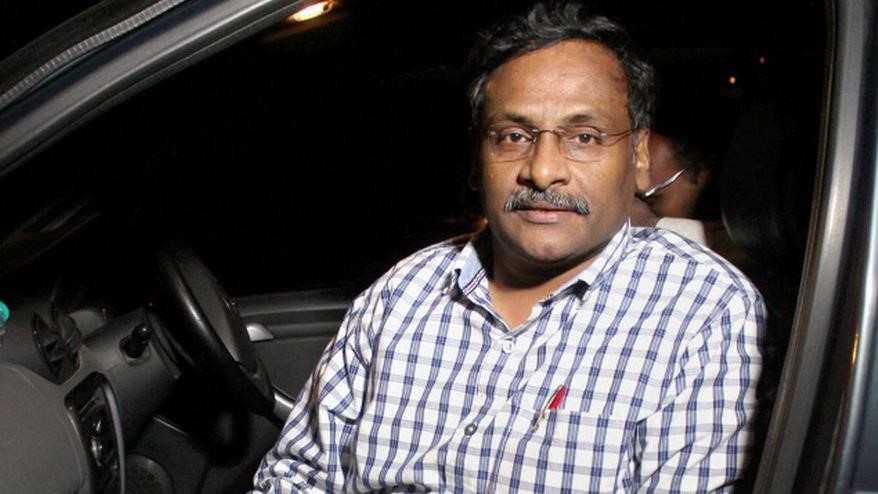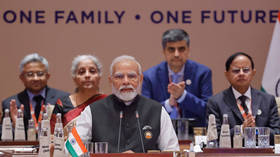NOVANEWS

By Sajjad Shaukat
23 years ago, Indian Constitution which claims India to be a secular state was torn into pieces
when on December 6, 1992, a large crowd of Hindu Karsevaks (volunteers) entirely demolished
the 16th-century Babri Masjid (mosque) in Ayodhya, Utter Pradesh in a preplanned attempt to
reclaim the land known as RAM Janmabhoomi – birthplace of the god.
The destruction of the Babri Masjid sparked Muslim outrage around the country, provoking
several months of inter-communal rioting between Hindu and Muslim communities, causing the
death of at least 2,000 people, majority of whom were Muslims. The governments of several
neighboring countries including those of the Islamic World condemned the Indian government
for failing to stop the demolition of the historical mosque.
In a 2005 book, India’s former Intelligence Bureau (IB) Joint Director Maloy Krishna Dhar
wrote that Babri mosque demolition was planned 10 months in advance by top leaders of the
Rashtriya Swayamsevak Sangh (RSS), BJP BJP/Sangh Parivar, VHP, Shiv Sena, the Bajrang Dal
and the then Prime Minister P.V. Narasimha Raow. Dhar elaborated, “He had drawn up the
blueprint of the Hindutva (Hindu nationalism) assault at Ayodhya in December 1992.”
However, on December 6, 1992, the RSS and its affiliates organized a rally involving 150,000
VHP and BJP Karsevaks at the site of the mosque. The ceremonies included speeches by BJP
leaders such as L.K. Advani, Murli Manohar Joshi and Uma Bharti. During the first few hours of
the rally, the crowd began raising militant slogans. A police cordon had been placed around the
mosque in preparation for attack. However, around noon, a young man managed to slip past the
cordon and climb the mosque itself, brandishing a saffron flag. This was seen as a signal by the
mob, who then stormed the structure. The police cordon, vastly outnumbered, fled. The mob set
upon the building with axes, hammers, and grappling hooks, and within a few hours, the entire
mosque was leveled. Hindu fanatics also destroyed numerous other mosques within the town.
A 2009 report of the inquiry commission, authored by Justice Manmohan Singh Liberhan, found
68 people to be responsible for the destruction of the Babri Masjid, mostly leaders from the BJP.
Among those named were Vajpayee, Advani, Joshi, Vijay Raje Scindia and Kalyan Singh who
was then the Chief Minister of Uttar Pradesh. Liberhan wrote that he posted bureaucrats and
police officers to Ayodhya, whose record indicated that they would stay silent during the
mosque’s demolition. Anju Gupta, a police officer who had been in charge of Advani’s security
on that day, stated that Advani and Joshi made speeches that contributed to provoking the
behavior of the mob to accomplish demolition of the mosque. However, the commission clearly
identified BJP, RSS and VHP as the organizations responsible for the incident and also
nominated L.K. Advani, Lalu Parsad Yadev and Murli Manohar Joshi as main culprits behind
this incident. But no action was taken against them.
By showing prejudice in favour of Hindus, on September 30, 2010, the Allahabad High Court
ruled that the 2,400 square feet (220 m2) disputed plot of land, on which the Babri Masjid had
stood would be divided into three parts. The site at which the idol of Rama had been placed was
granted to Hindus in general, the Sunni Wakf Board got one third of the plot, and the Hindu sect
Nirmohi Akhara got the remaining third. The excavations by the Archaeological Survey of India
were heavily used as evidence by the court to support its so-called finding that the original
structure at the site was a massive Hindu religious building.
Since the leader of the ruling party BJP Narendra Modi became Prime Minister of India, various
developments like unprecedented rise of Hindu extremism, persecution of minorities, forced
conversions of other religious minorities into Hindus, ban on beef and cow slaughter, inclusion
of Hindu religious books in curriculum, creation of war-like situation with Pakistan etc. clearly
show that encouraged by the fundamentalist rulers, Hindu extremist outfits such as BJP, RSS
VHP, Bajrang Dal and Shiv Sena including other similar parties have been promoting religious
and ethnic chauvinism in India by propagating ideology of Hindutva.
In fact, on the basis of anti-Muslim and anti-Pakistan slogans, BJP got a land sliding victory in
the Indian elections 2014. Hence, Prime Minister Modi is giving impetus to Hindu chauvinism
against Pakistan and the Muslims, as under his directions, New Delhi accelerated unprovoked
firing at the Line of Control in Kashmir and Working Boundary across Pak-Indian border, even
without bothering for nuclear war.
Particularly, in the recent months, extremists of Hiudu fundamentalist outfits intensified assaults
on the Muslims and Pakistani artists, famous literary persons—members of the cricket boards
etc., and even on moderate Hindus.
More than 200 Indian writers, Authors, scientists, artists, filmmakers, film-stars etc. decided
returned their national awards in protest to rising Hindu extremism under Modi rule, while more
than 100 persons have returned their retuned. Former Indian military personnel have now also
started returning their medals, criticizing the policies of the BJP government, embroiling Prime
Modi in a new domestic crisis.
Modi’s anti-Pakistan policies have also external aspects. In this regard, while addressing a
ceremony during his Bangladesh tour, Indian Prime Minister Narendra Modi openly stated on
June 7, 2015 that Indian forces helped Mukti Bahini (Militants) to turn East Pakistan into
Bangladesh. He elaborated that former prime minister Atal Bihari Vajpayee had played an active
role in separating Bangladesh from Pakistan, and he had also come to Delhi in 1971 to
participate in the Satyagraha Movement, launched by Jana Sangh as a volunteer to garner
support for the Mukti Bahini members.
It is notable that since Prime Minister of Bangladesh and leader of the ruling party, Awami
League, Sheikh Hasina Wajid came into power, India has been employing various tactics to
entrap Bangladesh by exploiting her pro-Indian tilt to fulfill its strategic interests. In this context,
Prime Minister Hasina Wajid has continuously been pursuing Indian directions by conducting
anti-Pakistan campaign. Therefore, after passing of 42 years to the events of 1971, which
resulted into the separation of East Pakistan, Abdul Qadir, the leader of Jamaat-e-Islami (JI) was
hanged because of his loyalty to Pakistan.
However, Bangladesh’s ruling party, under Sheikh Hasina Wajid maintains an anti-Pakistan
posture with sinister designs of expressing animosity, antagonism and unrestrained emotional
flare-up. The aim is to exploit feelings of masses by keeping the “hate Pakistan” agenda alive.
This enables Awami League and Hasina Wajid to remain significant in Bangladesh’s power
politics despite their failure to deliver good governance to the People. It also helps them to
appease their mentors in India. Using abusive language against Pakistan and its armed forces
makes Hasina Wajid relevant in Indian politics, while she herself prefers those entities which
derive sadistic pleasure by depicting Pakistan in bad light.
In this connection, in connivance with New Delhi, Bangladesh government and Awami League
have launched a massive media campaign in order to spread venom against Pakistan, its armed
forces, Inter-Services Intelligence (ISI) and against all those Bangladeshi nationals who were
loyal to the state during 1971 crisis.
By neglecting Islamabad’s positive approach, Bangladesh government has continued its anti-
Pakistan approach to please India. It could be judged from the statement of Prime Minister
Hasina Wajid who has vocally said, “Bangladesh has no room for the people loving Pakistan.”
Nevertheless Prime Minister Sheikh Hasina has been following pro-Indian policies. In this
respect, on the secret insistence of India, unlike the past years, a ceremony was held in Dhaka on
March 24, 2013, with full pump and show to honour ‘Foreign Friends of Bangladesh Award,’ in
relation to the separation of East Pakistan. For this aim, several foreign friends who included
various institutions and media anchors from various countries, particularly India were invited.
The main purpose behind was to distort the image of Pakistan and its armed forces regarding
alleged atrocities, committed against the Bengalis. Notably, in December, 2012, Prime Minister
Hasina had refused to attend D-8 conference in Islamabad unless Pakistan tendered apology for
the alleged genocide of Bengalis.
While, a famous Bengali journalist Sarmila Bose authored a book, “Dead Reckoning: Memories
of the 1971 Bangladesh War” after thorough investigation. Her book was published in 2011.
While countering exaggerations of the Indian and Bengali Journalists, Bose argues that the
number of Bengalis killed in 1971 was not three million, but around 50,000, while Bengalis were
equally involved in the bloodshed of Punjabis, Biharis, Pashtoons and Balochis.
Sheikh Mujibur Rahman was already in connivance with India for separation of East Pakistan.
Therefore, when East Pakistan was occupied by Indian Army in 1971, he stated with pleasure
that his 24 years old dream of an independent Bangladesh had been fulfilled. While commenting
upon 1971 tragedy, Indra Gandhi clearly divulged Indian hegemonic designs by saying “Today
we have sunken Two Nation Theory in bay of Bengal.”
Majib had earlier developed his contacts with Indian rulers and training camps of Mukti Bahini,
established by Indian army and RAW which also funded Mujibur Rehman’s general elections in
Undoubtedly, various anti-Pakistan developments such as Modi’s open confession regarding
Indian support to militants of Mukti Bahini, his arrival in Dhaka to receive award of Atal Bihari
Vajpai, presentation of ‘Surrender Ceremony’ photograph by Bangladeshi leader to Modi,
ruthless death sentences to Jamat-e-Islami Pro-Pakistan leaders under highly doubtful and
objectionable trials etc. show that Indo-Bangladesh media nexus backed by RAW has become
more active for last 4/5 years to create mistrust among people of Bangladesh against Pakistan.
Moreover, Indian cross-border terrorism in Pakistan, her support to Tehreek-e-Taliban Pakistan
(TTP) which is responsible for terror-acts in Pakistan—also involved in the massacre of innocent
children at Army Public School, Peshawar might be noted as instance of anti-Pakistan
Although apparently, India claims to be the largest democracy, acting upon the principles of
liberalism and secularism, yet in practice, all political, economic and social fields of the country
are divided on the caste lines. It is surprising that theoretically, Indian Constitution safeguards
the rights of minorities, but in practice, ideology of Hindutva prevails. Hindu majority led by the
BJP has shown complete disregard to the Constitution, and commit excesses and cruelties against
Muslims, Sikhs, Christians and Dalits with impunity.
Nonetheless, apart from other frenzy events, the demolition of the Babri Masjid will remain a
major scar on Indian so-called secularism, as on the very day, Indian fundamentalist leaders
broke all the records of Hindutva terror by deliberately hurting the feelings of the Muslims. The
atrocities and tyranny let loose on that day in Ayodhya continues unabated against the Muslims
in one form or the other, under the Modi regime.



